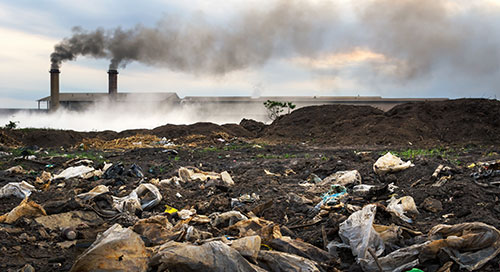climate-change-is-boring-let-s-solve-it-already
February 07, 2020
“What should I do about climate change?” If you are not sick of the question, you are not paying attention. All any of us need is another urgent yet vague cause nibbling at our well-trenched propensity for guilt. I hear you there, but climate change is different. Not because of its awe-inspiring gravitas—it is, in fact, the ground zero of causes—but because it is such a trivial problem to solve. Now that the cat is out of the bag, it is taking much more collective effort to avoid and even more to recast and spin the constantly mounting scientific evidence than it would to just fix the problem. We could be done by lunch and move on to more interesting pastimes.
As a case in point, let’s look at my area of expertise: buildings. Climate change = carbon dioxide = fossil fuels = energy. To take our buildings out of the climate equation, all we have to do initially is make them much more energy-efficient. That is pretty easy since we have not thought this way before. For example, insulation as a discrete concept only started in the 1940s. By essentially rearranging existing materials and methods, we can and do produce buildings that use a tiny fraction of the energy required by the present norm. Though more difficult, the same principles can be applied to building retrofits. This reduced demand transforms how we look at energy production, allowing us to utilize renewable onsite and/or local sources such as solar electric. The takeaway is that without significant innovation, we can create building projects today that take responsibility for fulfilling their own clean energy needs, thus essentially removing them from culpability in climate change.
The buzzword for this is “carbon neutral,” and it is as simple and boring as it sounds. What’s more, it is just better. To generalize, buildings built like this are healthier to live in, cheaper to run, and last longer. There is even a sound technical argument that they improve occupant sex lives due to maintaining an optimal O2/CO2 balance in bedrooms through the exacting ventilation strategy required by this approach. Saving the world through healthier buildings that improve our sex lives. Not much of a burden.
There is a complication, however. Since the climate is already changing, we have to adapt to the results as we fix the mechanism. If our new carbon-neutral building suddenly finds itself in a flood zone what have we accomplished? Buzzword here: resilience. Again though, this is nothing new. It is just a part of design to adapt to the site. Sun, wind, water. The elements are not changing, nor the physics of their effects, only the details of how they interact with a specific site being considered. This snoozer is the problem bringing us to the brink of extinction?
And yet we building professionals are still not doing our part. Though proven and practiced by a minority, the mainstream remains inexplicably reluctant to adopt existing solutions. Why? I have heard all the excuses, but it simply comes down to us not doing our jobs. Each and every building professional needs to rearrange the pencils on his or her desk to solve our part of this simple problem.
Then, we can zoom out and say the same to all of us. Every profession, every person, in your job and in your life: find the carbon and design it out of what you do. It’s not rocket science, people. It also isn’t developing aviation, curing polio, or even digging a tunnel under the Hudson River—a feat I still think is impossible until every time I go through it. Stop avoiding, stop waiting, stop whining. Do not look for perfection. Adopt existing solutions first; then, look to innovate. Adjust your habits, yes, but most of all adjust your perspective. For example, do not even try to tell me this is too expensive. That is a “the dog ate my homework” excuse. Note to bankers: move up the bench and get in the game!
Which brings us to the most interesting facet of this issue. As corny as it sounds, climate change requires that we finally all work together if any of us are to continue working at all. No movement can solve this. No elite can run from it. The climate is collective. And if the solution for buildings requires a better sex life, what is going to be the result of retooling the rest of our industries and lifestyles to fix this ominous, boring problem? I can’t wait to find out.











